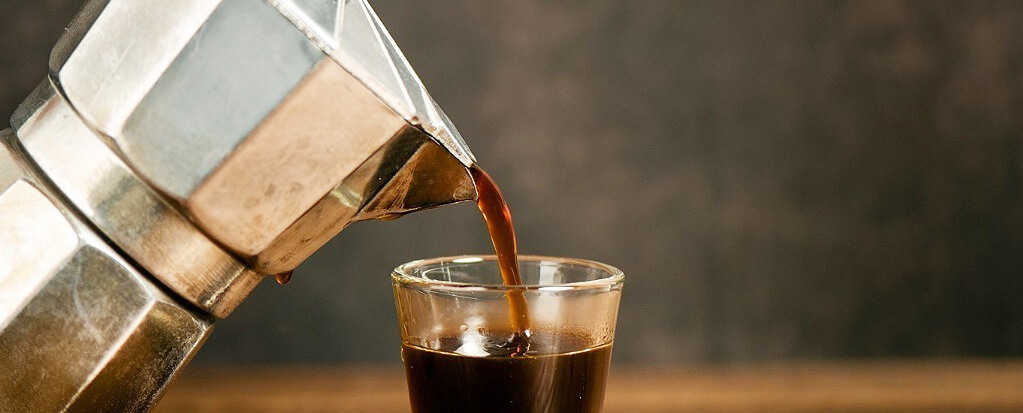Could not save your registration. Please try again.
Great, you are now registered. Welcome to the club and look forward to our updates.

This iconic appliance, also known as an espresso maker, is a firm favourite in Italian households and delivers a strong, aromatic coffee.
Have you ever tried coffee from a moka pot? This iconic appliance, also known as an espresso maker, is a firm favourite in Italian households and delivers a strong, aromatic coffee.
In this article, you'll find out everything you need to know about the Moka pot, from its origins to how to make it perfectly.
The Moka pot owes its name to the city of Mokha in Yemen, which was known as an important trading centre for coffee in the 15th century. The espresso maker was invented by Alfonso Bialetti in Italy in 1933 and today bears the name "Moka Express". In Italy, the pot is often simply called "Bialetti", after its inventor. It was developed to make a strong, espresso-like coffee at home and has been an integral part of Italian kitchens ever since.
To prepare coffee in the Moka pot, you only need a few high-quality ingredients: freshly ground coffee and water. The coffee should be medium-fine ground, slightly coarser than for an espresso machine, but finer than for a filter coffee. Use cold, soft water to achieve the best results. The amount of water should fill the bottom container of the jug to just below the safety valve.
The centrepiece is of course the Moka pot itself, which can be made of aluminium or stainless steel. Aluminium models are traditional and lighter, while stainless steel versions are also suitable for induction cookers. You will also need a coffee grinder to grind the coffee freshly and a cooker to heat it up. A kettle to pre-heat the water can be helpful to speed up the cooking process and minimise the risk of a bitter taste.
Brewing with the Moka pot requires a little attention to achieve the perfect coffee:
Coffee from the Moka pot is stronger and fuller-flavoured than filter coffee, as it is prepared under pressure, similar to espresso. However, it does not have the same intensity as espresso from a portafilter machine, as the pressure in the Moka pot is lower. The result is a coffee with a rich flavour and a slight bitterness, which is typical of this preparation method. Compared to filter coffee, moka coffee contains more oils and flavours, which makes it more complex in taste.
In addition to the moka pot and a coffee grinder, you can supplement your setup with a few practical helpers: A kettle with a temperature setting helps to bring the water to the optimum temperature. A kitchen scale is useful for measuring the right amount of coffee and water. It is also advisable to clean the jug regularly to remove residues and keep the flavour pure. A soft brush and hot water are usually sufficient for this.
With the Moka pot, you can bring a piece of Italian coffee culture into your home - uncomplicated and authentic. Try it out and experience the unique flavour of this traditional preparation!